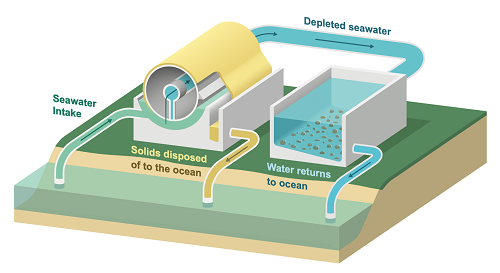Seashells capture carbon naturally. Courtesy Morganagro.
The 2021 Liveability Challenge saw a range of clever technologies pitted against each other in a bid to win a million Singapore dollars. The winner, SeaChange, scooped the cash with its system for making seashell clones by absorbing carbon gases from the atmosphere. By James Teo.
Singapore, July 2021. SeaChange, a bunch of US-based scientists from the University of California, Los Angeles (UCLA), recently had a brainwave. Instead of dreaming up bizarre new tech such as giant CO2 vacuum cleaners that suck greenhouse gas from the atmosphere in a way that has never been done before, why not just copy nature?
“What is the best way to start trapping CO2?”- UCLA’s Dante Simonetti. Courtesy UCLA.
“We asked ourselves, what would be one of the best ways for us to start trapping CO2?” said Dante Simonetti, a researcher at UCLA’s Samueli School of Engineering. Simonetti and his team wondered if nature had any lessons to give – and it turns out, it did. “We wondered about the formation of seashells; this is a reaction that happens naturally.” And guess what seashells are made out of? You have got it – carboniferous deposits. That’s CO2 to lay people.
This year’s Liveability Challenge competition, held in Singapore, was themed around ideas to reduce and lock-in greenhouse gas emissions and create a circular economy that is restorative and regenerative in design too. SeaChange thought their idea fitted perfectly into the competition entry profile, so they entered.
“We started thinking, how can we leverage (CO2 from seawater) at a scale where it will start affecting atmospheric CO2 levels?” explained Simonetti.
Their UCLA group’s research revealed that it was quite possible to set up a reactive system where seawater is pumped through a mesh that gives it an electric charge. That triggered a chemical reaction that, given the right environment, combines dissolved CO2 with calcium and magnesium in the water, creating limestone and magnesite – exactly the same materials as seashells. Depleted seawater is then fed back into the sea to absorb more CO2.
Seawater is pumped through the extractor, which catalyses the CO2 into limestone and magnesite, in one pass, with only water as a byproduct. Courtesy UCLA
This seemingly simple process can be scaled up to process massive amounts of seawater, removing CO2 and allowing the seas to absorb some of the excess in our atmosphere. Simple, yet very effective.
“Using sea water as a sponge (for collecting CO2) is a gamechanger for atmospheric CO2 removal,” said Camly Tran, CEO at SeaChange. Tran, who is also a director at UCLA’s Institute for Carbon Management underlined the significance of the researchers’ discovery – and the value of the 2021 Liveability Challenge award. “This is important work, and it is potentially transformative,” she noted.
The SeaChange entry came out ahead of a group of six other serious finalists to claim the top prize of US$735,000 in funding for their project from Temasek Foundation, the philanthropic arm of Singapore state investment firm Temasek.
With some estimates projecting that new tech will need to suck some 10 billion tonnes a year of CO2 from our atmosphere by the middle of the century, a lot of work needs to be done.
But the SeaChange system looks like it could come up with some serious anti-gas muscle. The research team estimates that because seawater can absorb CO2 at a much higher (up to 150 times more) concentrations than air, it will take less energy to make the system work.
“Using sea water as a sponge is a gamechanger.”- SeaChange CEO Camly Tran. Courtesy LinkedIn.
“We don’t have to expend any energy for the process to happen,” said Simonetti. “If we compare it to direct air capture, that requires a tremendous amount of energy to take the CO2 out of the air and to concentrate it into something that can then be stored.” Which makes extracting carbon from seawater much less expensive than direct air capture – plus it produces hydrogen as a by-product. This can then be used to power the process without using extra carbon-based fuel sources.
The UCLA team has already come up with an idea to incorporate carbon dioxide into concrete – they won another prize for this tech earlier this year. So combining the two means the new process produces extracted CO2 minerals that can be turnedinto blocks for pavers, building materials or suchlike.
“Our technology also permanently sequesters CO2, something that doesn’t necessarily happen in other processes,” said the team. “Trees that are planted or protected to capture CO2 might be lost to disease or in forest fires. Extracted gas that is pumped back underground can leak back into the air. But the minerals created through our new process offer permanent storage. We are talking about geological time, millions of years,” added Simonetti.
Well worth putting a few mil into, we reckon.



